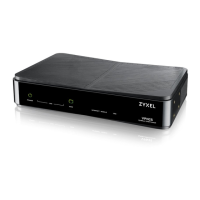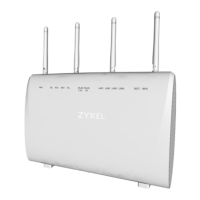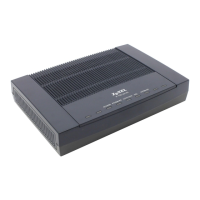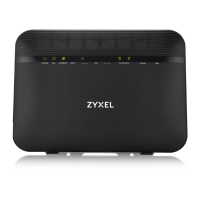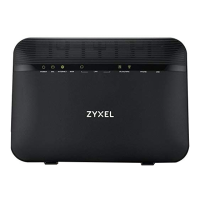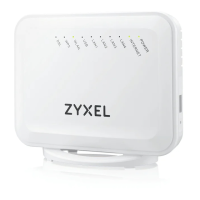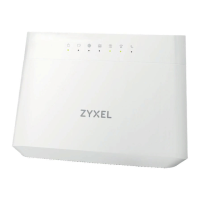Chapter 8 Basic Setting
VES1724-56 User’s Guide
93
8.14 SFP Threshold Setup
Use this screen to view the status of the Small Form-factor Pluggable (SFP) mini-GBIC transceivers
installed in the Switch's SFP slots. You can also set thresholds for sending traps based on the SFP
module's operating parameters such as transceiver temperature, laser bias current, transmitted
optical power, received optical power and transceiver supply voltage. N/A displays if the Switch
does not detect a mini-GBIC transceiver in an SFP slot.
State This field displays whether the neighboring IPv6 interface is reachable. In IPv6, “reachable”
means an IPv6 packet can be correctly forwarded to a neighboring node (host or router) and
the neighbor can successfully receive and handle the packet. This field can display:
Reachable: The interface of the neighboring device is reachable. (The Switch has received a
response to its neighbor solicitation.)
Stale: The last reachable time has expired or the Switch received an unrequested
advertisement that updates the cached link-layer address from the neighboring interface.
Delay: A packet is being sent to the neighboring interface in Stale state. The Switch delays
sending request packets for a short time to give upper-layer protocols a chance to determine
reachability. If no reachability confirmation is received within the delay timer, the Switch
sends a neighbor solicitation and changes the state to Probe.
Probe: The Switch is sending neighbor solicitations and waiting for the neighbor’s response.
Invalid: The neighbor address is an invalid IPv6 address.
Unknown: The status of the neighboring interface can not be determined.
Incomplete: Address resolution is in progress and the link-layer address of the neighbor has
not yet been determined (see RFC 4861). The interface of the neighboring device did not give
a complete response.
Link Type This field displays the type of the IPv6 address.
Local: The IPv6 address belongs to an interface on the Switch.
Static: The IPv6 address belongs to a neighboring interface and it has been configured
manually on the Switch.
Dynamic: The IPv6 address belongs to a neighboring interface and the Switch has learned it
dynamically.
Other: The IPv6 address belongs to none of the types above.
Delete Select entries to remove in the Delete column and then click the Delete button to remove
them.
Cancel Click Cancel to clear the selected checkboxes in the Delete column.
Table 24 Basic Setting > IPv6 Setup > IPv6 Neighbor Setup (continued)
LABEL DESCRIPTION
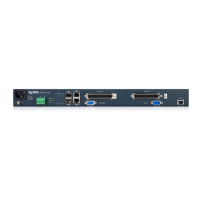
